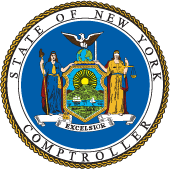Audit Objective
Did Shoreham-Wading River Central School District (District) officials properly record and account for capital assets?
Audit Period
July 1, 2022 through April 30, 2024.
We expanded our audit period through August 7, 2024 to conduct a walkthrough at the District.
Understanding the Audit Area
A capital asset is generally defined as an asset that has a useful life of more than one year. It can include everything from furniture, computer equipment, vehicles and machinery to buildings and land. Consequently, they represent a significant investment of school district (district) resources. Detailed records help to establish accountability and provide district officials with the information needed to develop additional controls and safeguards, such as establishing additional policies and procedures. As of July 1, 2023, the District’s inventory list of capital assets contained 9,815 assets with an acquired value of $181,700,280.
Audit Summary
District officials did not properly record and account for all of the District’s capital assets. As a result, the District has an increased risk that its capital assets could be lost, stolen or misused.
The District’s Assistant Superintendent of Business and Operations (Assistant Superintendent), with the assistance of the District’s Business Manager (Business Manager), supervised and monitored the District’s business operations, which included overseeing the maintenance of the inventory list.
The District’s Board of Education (Board) did not designate a property control manager. Therefore, the District did not have a specific person who was responsible for tracking capital assets and ensuring that capital asset information was complete, up-to-date, accurate and useful. Also, District officials did not properly segregate asset inventory duties among employees, and officials did not monitor the work of those who performed these duties.
For example, we reviewed 30 purchases made during our audit period, which included 96 purchased assets, and determined that 78 assets with a combined acquisition value of $419,538 (87 percent) were not included in the District’s inventory list.
In addition, we selected 50 assets with a combined approximate acquisition value of $233,9451 to locate them to confirm that they were in the District’s possession and properly tagged. While we located all assets, we determined that 15 assets with a combined acquisition value of $29,770 had incorrect or “unknown” locations listed in the inventory list, had inaccurate asset descriptions, or had multiple asset tags.
Furthermore, of the 276 assets recorded in the District’s inventory list as having been disposed of, 269 assets with a combined acquisition value of $830,595 had been disposed of without proper Board approval, disposal information that was not recorded in a timely manner, or were inaccurately recorded as disposed in the District’s inventory list.
This report includes eight recommendations that, if implemented, will improve the District’s recording of and accounting for capital assets. District officials agreed with our recommendations and indicated they planned to initiate corrective action.
We conducted this audit pursuant to Article V, Section 1 of the State Constitution and the State Comptroller’s authority as set forth in Article 3 of the New York State General Municipal Law. Our methodology and standards are included in Appendix C.
The Board has the responsibility to initiate corrective action. A written corrective action plan (CAP) that addresses the findings and recommendations in this report must be prepared and provided to our office within 90 days, pursuant to Section 35 of the New York State General Municipal Law, Section 2116-a (3)(c) of the New York State Education Law and Section 170.12 of the Regulations of the Commissioner of Education. To the extent practicable, implementation of the CAP must begin by the end of the next fiscal year. For more information on preparing and filing your CAP, please refer to our brochure, Responding to an OSC Audit Report, which you received with the draft audit report. The CAP should be posted on the District’s website for public review.
